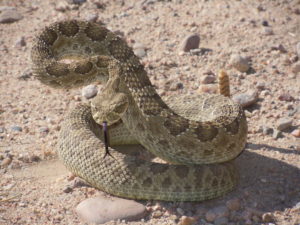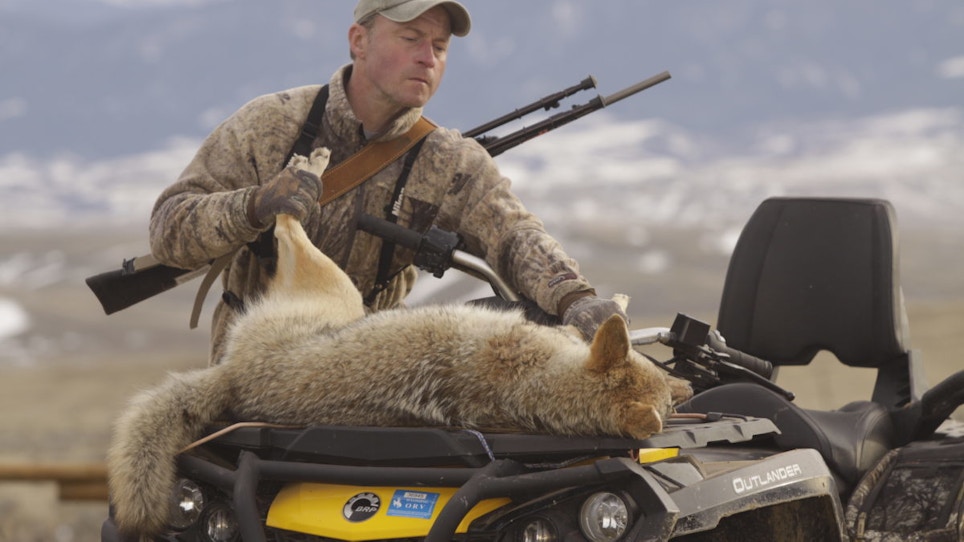What’s lurking in your predator hunting area that poses a danger? Let’s take a look at some obvious dangers for starters. First, consider that huge, blazing orb above you.
According to the National Cancer institute, skin cancer is the number one form of cancer and that orb above is a threat. Guard yourself with sunscreen rated at 15 SPF on any exposed skin. Wear long sleeves and guard your pot with a wide-brimmed hat such as a military-style boonie hat. You can’t predator hunt without being outside and being outside puts you under the sun.

Rattlesnakes are found in many areas of the country and pose a danger to predator hunters. (Photo: Mark Kayser)
Next up consider those small invaders. According to the Centers for Disease Control and Prevention, Lyme disease is one of the fastest growing infectious diseases in the U.S. and Western Europe. Recent reporting indicates that infection rates are up 10 times when compared to what has been previously noted. The Lyme disease bacterium is spread through the bite of infected ticks. The black-legged tick or deer tick spread the disease in eastern locales and the western black-legged tick spreads the disease on the Pacific Coast. Wear long sleeves, a hat and gloves. Tuck your pant legs into your socks and use insect repellent liberally.
In warm-weather months and southern zones expect venomous snake encounters. Some could place your life in jeopardy. Venomous snakes found in the U.S. include rattlesnakes, copperheads, cottonmouths/water moccasins and coral snakes. Each year approximately 8,000 venomous snake bites occur in the nation. Of those, approximately five people die.
The reason the death rate is so low is due to most receiving immediate medical attention. If you are bitten, don’t put off a visit to the emergency room! To avoid being bitten, be aware of your surroundings, wear tall snake boots if in a snake-rich environment and listen. Rattlesnakes almost always rattle a warning before striking.
Another danger could arrive from your successful predator calling. You might call in something looking to eat you. The two biggest threats to your calling safety include bears and mountain lions. It could happen anywhere coast to coast and calling in an angry grizzly bear definitely is a danger. With that in mind always set up with plenty of visibility to see any incoming predators. Hunt with a partner to watch any backdoor approaches and focus your calls to an intended audience.
Finally, be alert for human dangers. Illegal immigrants are big news today and you never know if you’ll have an encounter while hunting along the southern border. It’s doubtful the illegal aliens will cause you grief, but learning a few Spanish phrases could help diffuse any misunderstanding. The bigger issue could be confrontations with a coyote, otherwise known as human smugglers. Worse yet could be a clash with illegal drug traffickers. Of course the outback is a refuge for any drifter running from the law. If you’re predator hunting you undoubtedly have a firearm, but carrying a sidearm could go a long way in helping a bad guy make a good decision.






